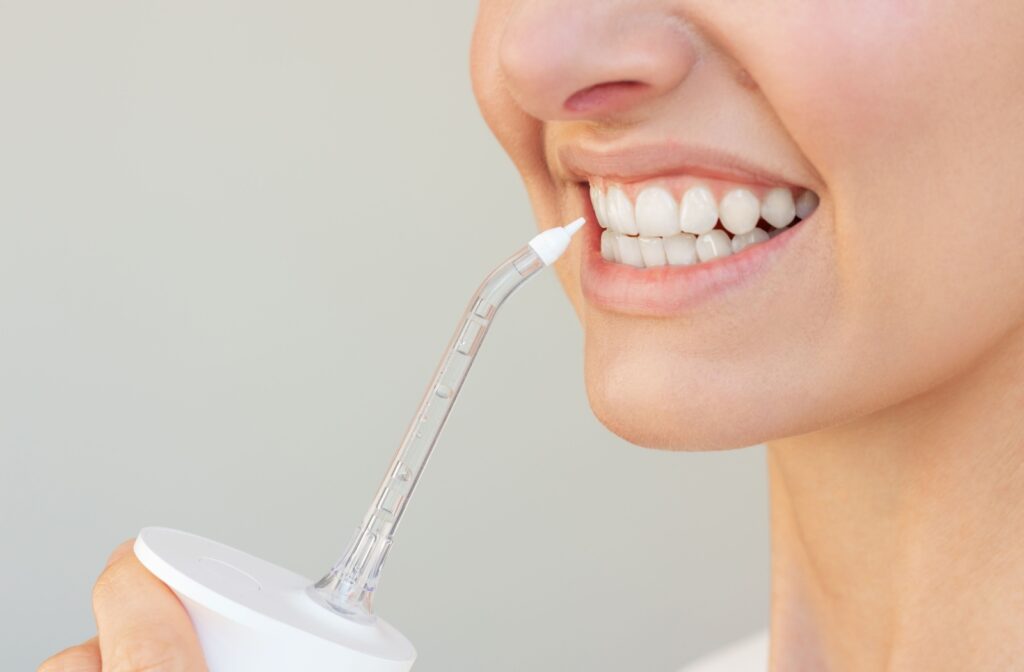
Flossing often feels like the forgotten sibling in our daily dental routine—everyone talks about brushing, but flossing quietly gets skipped more often than it should. Still, it’s one of the most important habits for your oral health. So, how many times a day should you floss?
Once a day is the sweet spot—typically in the evening, to clear out any plaque or food debris before bed and help your mouth stay clean overnight.
Why Flossing Matters
You might be thinking: I brush twice a day, isn’t that enough? Brushing is crucial, yes, but your toothbrush bristles can’t reach the tight spaces between your teeth and along the gumline. That’s where floss comes in.
Flossing helps prevent:
- Plaque buildup
- Tartar formation
- Cavities
- Gingivitis and gum disease
- Bad breath
Plaque left between your teeth hardens into tartar within 24–72 hours. Once tartar forms, only a dental professional can remove it—no matter how hard you scrub. Consistent daily flossing helps stop this process before it begins.
Beyond oral health, research also shows links between gum disease and systemic conditions like heart disease, diabetes, and respiratory issues. So, by protecting your gums, you are also supporting your overall health.
How to Floss the Right Way
It’s not just that you floss—it’s how you floss that makes a difference.
Here’s a quick step-by-step refresher:
- Use enough floss: About 18 inches. Wind it around your middle fingers, leaving a few inches to work with.
- Hold and guide: Hold the floss taut between your thumbs and index fingers. Gently slide it between your teeth using a back-and-forth motion.
- Curve it: Once you reach the gumline, curve the floss into a C-shape against the tooth. Gently glide it up and down the side of the tooth and slightly under the gum.
- Repeat: Use a clean section for each tooth and don’t forget the back of your last molars.
If you’re just starting, some light bleeding may occur—that’s normal. It should subside after a week or 2 of regular flossing. But if it continues, it’s time to check in with your dentist.
Alternatives to Traditional Floss
Let’s be honest: traditional floss doesn’t work for everyone. Whether it’s arthritis, braces, or a busy lifestyle, there are valid reasons why flossing can be tricky. Fortunately, there are some great alternatives to keep your interdental spaces clean:
- Floss picks: Small plastic tools with pre-strung floss and a pointed end for food debris. Convenient and easy to use, especially for kids or on the go.
- Floss threaders: Ideal for people with braces or bridges, these help you guide floss into tight or tricky spots.
- Interdental brushes: These tiny, bristled brushes come in different sizes and are great for larger spaces between teeth. Many people find them more comfortable than floss.
- Water flossers (Waterpik): These devices shoot a stream of water between your teeth and along the gumline to remove plaque and food. They’re especially helpful for people with dental work, sensitive gums, or mobility issues.
No matter which tool you use, consistency matters more than the method. Find what works best for you and stick with it!

Tips to Make Flossing a Habit
Even with all this info, it can still be hard to make flossing stick. Try these simple tips:
- Pair it with something you already do, like washing your face or brushing your hair at night.
- Use a reminder or checklist app on your phone.
- Keep floss in plain sight—on the bathroom counter, in your gym bag, or at your desk.
- Try different tools until you find one that feels easiest for your hands and mouth.
- Celebrate small wins—flossing even a few times a week is better than not at all. Build up from there.
What Happens If You Don’t Floss?
Skipping floss might not seem like a big deal, but over time it can lead to bigger problems like:
- Red, swollen, or bleeding gums (early signs of gum disease)
- Persistent bad breath
- Tooth sensitivity
- Cavities between your teeth
- Tartar buildup that leads to more complex dental procedures
And these issues don’t always cause pain right away. Gum disease, in particular, can quietly progress without major symptoms until significant damage is already done. That’s why prevention is key—and flossing is one of your simplest tools.
The Role of Professional Dental Visits
Even the best home care routine needs a professional backup. Plaque that’s missed during flossing and brushing can harden into tartar, which needs to be professionally removed during a dental cleaning. And your dentist can check for early signs of decay, gum issues, or other health concerns that might otherwise go unnoticed.
For most people, visiting your dentist every 6 months for a cleaning and exam is ideal. If you’re dealing with gum issues or other oral health concerns, your dental team may recommend more frequent visits.
Ready to Take Charge of Your Smile?
Brushing twice a day and flossing once a day is a powerful combination for preventing decay and keeping your gums healthy. But it’s not just about avoiding cavities—it’s about feeling confident in your smile and comfortable in your daily life.
At Embrace Dental Care in Calgary, we’re here to support your oral health with personalized care, professional cleanings, and compassionate advice. Whether you’re due for your next checkup or want help finding the right flossing method, we’d love to see you.
Request your appointment today—we’re here to help you smile brighter.




